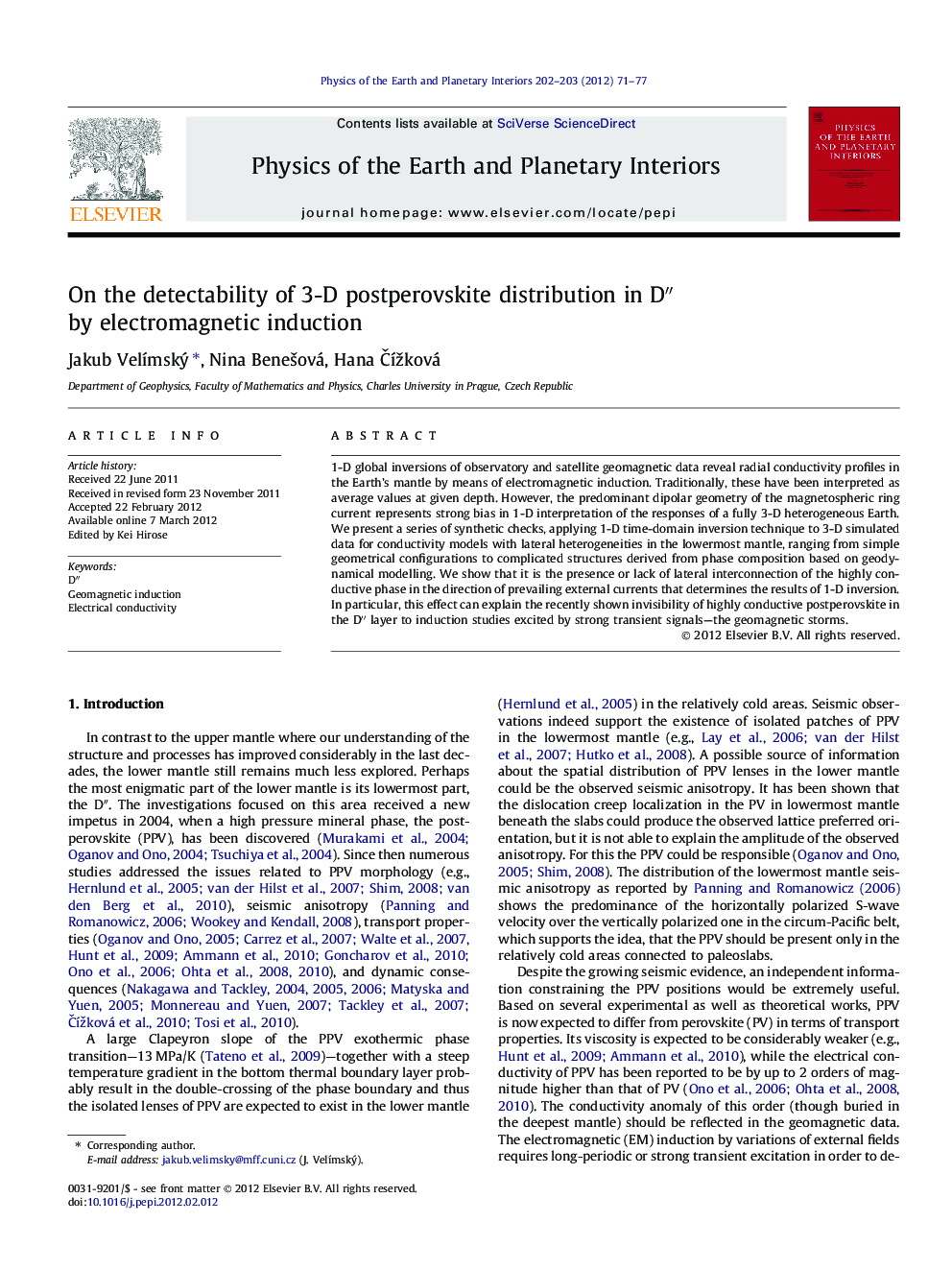| Article ID | Journal | Published Year | Pages | File Type |
|---|---|---|---|---|
| 4741771 | Physics of the Earth and Planetary Interiors | 2012 | 7 Pages |
1-D global inversions of observatory and satellite geomagnetic data reveal radial conductivity profiles in the Earth’s mantle by means of electromagnetic induction. Traditionally, these have been interpreted as average values at given depth. However, the predominant dipolar geometry of the magnetospheric ring current represents strong bias in 1-D interpretation of the responses of a fully 3-D heterogeneous Earth. We present a series of synthetic checks, applying 1-D time-domain inversion technique to 3-D simulated data for conductivity models with lateral heterogeneities in the lowermost mantle, ranging from simple geometrical configurations to complicated structures derived from phase composition based on geodynamical modelling. We show that it is the presence or lack of lateral interconnection of the highly conductive phase in the direction of prevailing external currents that determines the results of 1-D inversion. In particular, this effect can explain the recently shown invisibility of highly conductive postperovskite in the D″ layer to induction studies excited by strong transient signals—the geomagnetic storms.
► Geomagnetic storms induce secondary currents in D″ and Earth’s core. ► Interconnection of PPV w.r.t. source geometry determines the induction response. ► Isolated PPV patches in D″ are invisible to 1-D EM induction inversion.
